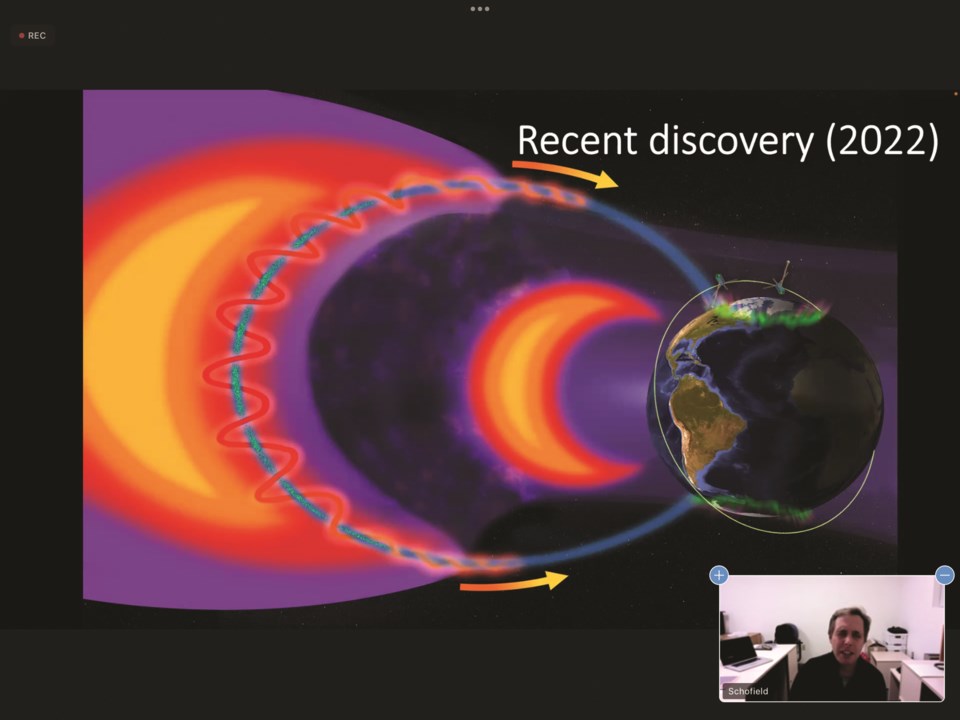ATHABASCA – Five hundred years ago the northern lights were seen as a menacing omen; a sign from the heavens; a good reason to move south, but today we have developed a much deeper understanding of the aurora borealis and why the phenomenon occurs, and much of that research has taken place in the Athabasca area.
Science Outreach – Athabasca's latest offering, a Nov. 29 virtual presentation from observatory researcher Ian Schofield called “It came from outer space: Space weather research at Athabasca University” took those in attendance to the sun and back, as that is where his field of research resides. Schofield, who resides in Athabasca, has been working alongside Dr. Martin Connors at AU since 2007, while Connors has been working in astronomy and auroral research at AU since the mid-90s.
“It’s an area of research that AU has been involved in for quite some time because, well, we’re pretty close to them,” said Schofield to open his talk.
“Athabasca is really the place to be if you want to see some impressive lights shows … Space physics has been an important field that AU has really excelled in and one of the major reasons is that we have such a great location in relation to where auroras take place.”
Schofield said a lot of his job description involves maintaining the AU observatories on campus and southwest of town and working with Connors, conducting experimental space physics research and helping develop instruments to observe and measure the Earth’s magnetic field, which plays a large role in how the aurora dance through the northern winter nights.
The program has also been involved in some “fairly prominent science endeavors” in its time as well including NASA’s THEMIS mission in 2007 which studied how mass and energy move through the near-Earth space environment to determine the physical processes initiating auroras.
The department was also involved in the discovery of a new type of aurora called STEVE (Strong Thermal Emission Velocity Enhancement) in 2019. Using publicly submitted information with the Aurorasaurus aurora reporting platform, scientists were able to classify the phenomenon which can be seen in our very own skies and resembles more of a strip of light than traditional auroras.
To say the sky is the limit may be an understatement as to the potential of the discoveries that still await to be found.
Science Outreach – Athabasca offers a virtual presentation every month.



